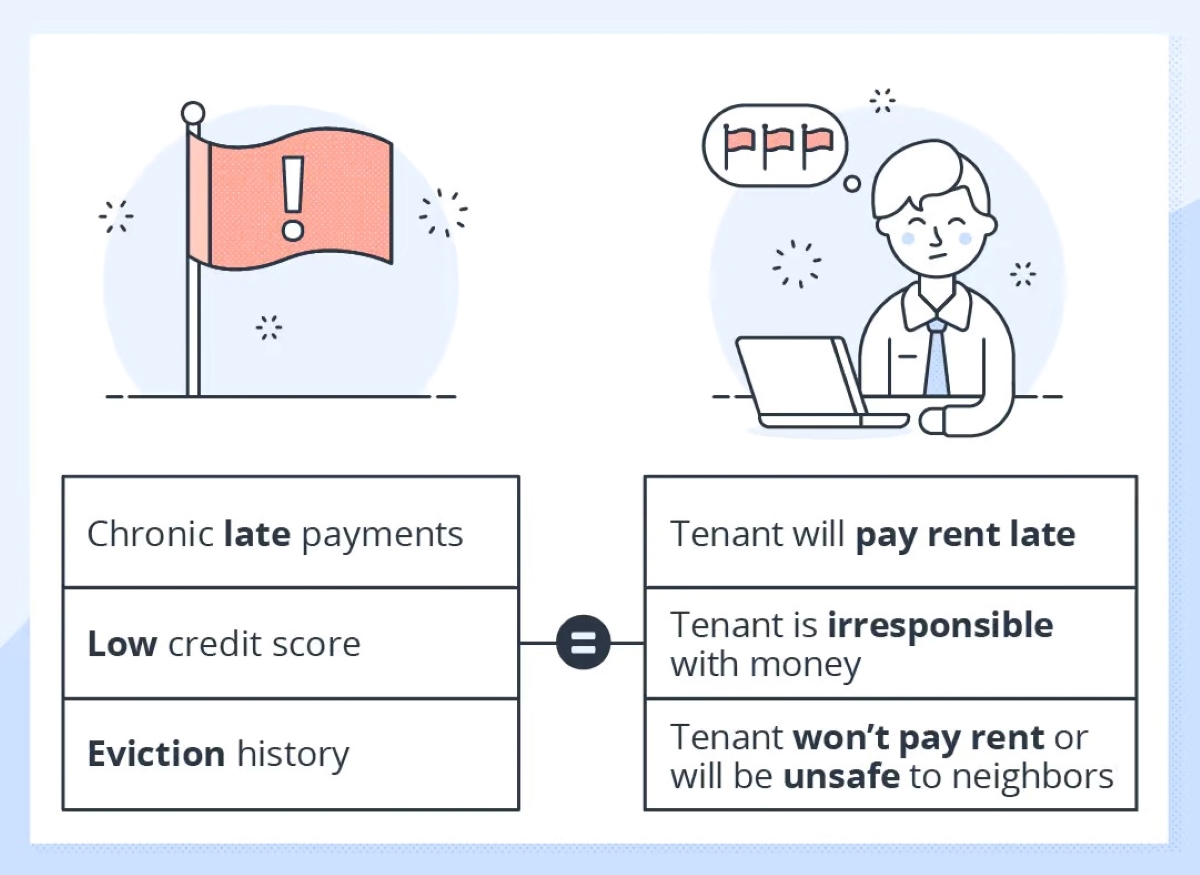

Finance
How To Run A Small Business For Dummies
Published: November 25, 2023
Discover essential finance tips and tricks to successfully run your small business. Get expert advice on managing finances and maximizing profits.
(Many of the links in this article redirect to a specific reviewed product. Your purchase of these products through affiliate links helps to generate commission for LiveWell, at no extra cost. Learn more)
Table of Contents
- Introduction
- Chapter 1: Getting Started
- Chapter 2: Developing a Business Plan
- Chapter 3: Understanding Finances
- Chapter 4: Marketing and Advertising
- Chapter 5: Hiring and Managing Employees
- Chapter 6: Managing Operations
- Chapter 7: Building and Maintaining Customer Relationships
- Chapter 8: Expanding and Scaling the Business
- Chapter 9: Dealing with Legal and Regulatory Issues
- Chapter 10: Assessing Performance and Making Improvements
- Conclusion
Introduction
Welcome to the world of small business ownership! Starting and running your own business can be an exciting and rewarding endeavor. It allows you to be your own boss, follow your passion, and have the potential to create financial freedom. However, it also comes with its own set of challenges and responsibilities.
Whether you are a budding entrepreneur or have already taken the plunge into small business ownership, this comprehensive guide is designed to help you navigate the often complex world of running a small business. From developing a solid business plan to understanding finances, marketing and advertising, hiring and managing employees, and dealing with legal and regulatory issues, we’ve got you covered.
In each chapter, we’ll provide you with practical tips, techniques, and strategies that you can implement to ensure the success and growth of your small business. We’ll break down complex concepts into easy-to-understand language, providing real-world examples and case studies along the way.
Running a small business is not just about making money. It’s about building strong and lasting relationships with your customers, creating a positive work environment for your employees, and making a meaningful impact in your community. Our guide will help you achieve all of these goals and more.
As you embark on this journey, keep in mind that running a small business requires dedication, resilience, and a willingness to adapt to a constantly changing landscape. It’s a marathon, not a sprint. But with the right knowledge and tools at your disposal, you can overcome any obstacle and achieve your entrepreneurial dreams.
So, grab a pen and paper, get ready to take some notes, and let’s dive into the world of small business ownership. We’ll be with you every step of the way.
Chapter 1: Getting Started
Starting a small business is an exciting venture, but it’s important to lay a strong foundation to ensure long-term success. In this chapter, we’ll guide you through the essential steps to get your business off the ground.
1. Define Your Business Idea: Start by identifying your passion and determining what type of business you want to run. Consider your skills, experience, and market demand for your product or service.
2. Conduct Market Research: Research your target market to understand your customers’ needs, preferences, and buying habits. This information will help you tailor your products or services to meet their needs and stand out from the competition.
3. Create a Business Plan: A well-crafted business plan is crucial for outlining your goals, strategies, and financial projections. It will serve as a roadmap to guide you through the early stages of your business.
4. Determine Legal Structure: Choose the legal structure that best suits your business, whether it’s a sole proprietorship, partnership, LLC, or corporation. Each option has its own benefits and implications for taxes, liability, and management.
5. Secure Funding: Assess your financial needs and explore different funding options, such as personal savings, loans, grants, or investors. Create a detailed budget and financial plan to ensure you have the necessary resources to launch and sustain your business.
6. Register Your Business: Choose a unique name for your business and register it with the appropriate government authorities. Obtain any necessary permits, licenses, or certifications required for your industry.
7. Set Up Your Operations: Establish a physical location or set up a virtual office, depending on the nature of your business. Purchase equipment, hire key personnel, and set up systems and processes to ensure smooth operations from day one.
8. Build your Network: Start networking and building relationships with fellow entrepreneurs, potential customers, and industry professionals. Attend business events, join industry associations, and utilize social media to expand your reach.
9. Develop a Marketing Strategy: Create a comprehensive marketing plan to promote your products or services effectively. Utilize both online and offline marketing channels, such as social media, email marketing, content marketing, and traditional advertising.
10. Stay Committed and Flexible: Starting a small business requires dedication, perseverance, and a willingness to adapt to changing circumstances. Stay focused on your goals and be prepared to pivot if needed.
By following these steps, you’ll set a strong foundation for your small business and increase your chances of long-term success. Remember, starting a business is a journey, and the key is to stay determined, learn from your experiences, and never stop growing.
Chapter 2: Developing a Business Plan
A well-crafted business plan is the blueprint for your small business. It not only helps you clarify your goals and strategies but also serves as a crucial document for securing funding and attracting potential investors. In this chapter, we’ll walk you through the key components of a comprehensive business plan.
1. Executive Summary: Start your business plan with a concise overview of your company, highlighting its mission, vision, and unique selling proposition. This section provides a snapshot of your business and should grab the reader’s attention.
2. Company Description: Provide a detailed description of your business, including its legal structure, location, history, and products or services. Explain why your business is well-positioned to succeed in the market.
3. Market Analysis: Conduct a thorough analysis of your target market, including its size, growth potential, and key demographics. Identify your direct and indirect competitors and analyze their strengths and weaknesses.
4. Product or Service Line: Describe the products or services your business offers and their unique features. Highlight any intellectual property, patents, or trademarks that differentiate your offerings from competitors.
5. Sales and Marketing Strategies: Outline your sales and marketing strategies for reaching and attracting customers. Define your target audience, pricing strategy, distribution channels, and promotional tactics.
6. Organizational Structure and Management: Provide an overview of your company’s organizational structure, including key positions and the responsibilities of each. Introduce your management team and highlight their qualifications and relevant experience.
7. Product Development and Innovation: Discuss your plans for product development and innovation, including any research and development activities. Highlight how you plan to stay competitive and adapt to changing customer needs.
8. Financial Projections: Present realistic financial projections for the next three to five years. Include an income statement, balance sheet, cash flow forecast, and break-even analysis. This section helps potential investors assess the viability and profitability of your business.
9. Funding Request: If you are seeking funding, clearly state your funding requirements, how the funds will be used, and the potential return on investment for investors. Be transparent about your financial needs and explain the potential for growth and profitability.
10. Risk Analysis and Mitigation: Identify the potential risks and challenges your business may face and propose strategies to mitigate them. This shows that you have thought critically about the potential obstacles and have plans in place to overcome them.
A well-developed business plan communicates your vision, demonstrates your understanding of the market, and instills confidence in potential stakeholders. It serves as a roadmap to guide you through the early stages of your business and allows you to evaluate your progress along the way.
Remember, a business plan is a living document that should be revisited regularly and updated as your business evolves. It helps you stay focused, make informed decisions, and adapt to changing market conditions. So, take the time to develop a comprehensive business plan – it’s an essential tool for the success of your small business.
Chapter 3: Understanding Finances
Understanding the financial aspects of your small business is vital for long-term success. In this chapter, we’ll guide you through the key elements of financial management and help you gain a clear understanding of your business’s financial health.
1. Financial Statements: Start by familiarizing yourself with the three major financial statements – the income statement, balance sheet, and cash flow statement. These provide an overview of your business’s financial performance, assets, liabilities, and cash flow.
2. Budgeting: Create a budget that outlines your projected income and expenses for a specific period, usually monthly or annually. This helps you allocate resources effectively, track your financial performance, and make informed decisions.
3. Cash Flow Management: Managing your cash flow is crucial for the day-to-day operations of your business. Keep track of incoming and outgoing cash to ensure you have enough to cover expenses, pay suppliers, and invest in growth opportunities.
4. Profit Margin Analysis: Calculate your profit margin to understand how much profit you are making from each sale. This helps you determine the profitability of your products or services and identify areas for improvement.
5. Pricing Strategy: Set pricing that not only covers your costs but also allows for a reasonable profit margin. Consider factors such as competition, market demand, and perceived value when determining your pricing strategy.
6. Financing Options: Explore different financing options to support your business’s growth. This could include bank loans, lines of credit, government grants, crowdfunding, or seeking investors. Assess the pros and cons of each option and choose what aligns best with your business goals.
7. Tax Obligations: Familiarize yourself with the tax obligations specific to your business structure and industry. Maintain accurate records, track deductible expenses, and consult with a tax professional to ensure compliance and minimize your tax liabilities.
8. Financial Ratios: Utilize financial ratios to assess your business’s financial health and performance. Common ratios include liquidity ratios, profitability ratios, and efficiency ratios. Regularly analyze these ratios to identify areas that need improvement and make informed financial decisions.
9. Risk Management: Identify potential financial risks and develop strategies to manage them effectively. This may involve obtaining insurance coverage, implementing internal controls, and diversifying your revenue streams.
10. Seek Professional Support: Consider hiring an accountant or financial advisor to provide expert guidance and ensure your financial management is accurate and compliant. They can help you navigate complex financial matters and provide valuable insights to optimize your business’s financial performance.
A sound understanding of your business’s finances is key to making informed decisions and driving sustainable growth. By integrating effective financial management practices into your small business, you’ll be better positioned to achieve your financial goals and build a strong foundation for long-term success.
Chapter 4: Marketing and Advertising
In today’s competitive business landscape, effective marketing and advertising strategies are essential for the success of your small business. In this chapter, we’ll explore different marketing and advertising techniques to help you reach and engage with your target audience.
1. Define Your Target Market: Clearly identify your ideal customers and their characteristics. Understand their needs, preferences, and behaviors to tailor your marketing efforts effectively.
2. Develop a Brand Identity: Build a strong brand identity that reflects your business’s values, mission, and unique selling proposition. Consistently incorporate your brand elements, such as your logo, colors, and messaging, across all marketing collateral.
3. Online Marketing: Utilize various online marketing channels to increase your online presence and attract customers. This may include creating a user-friendly website, utilizing search engine optimization (SEO) techniques, implementing content marketing strategies, and utilizing social media platforms.
4. Traditional Advertising: Supplement your online efforts with traditional advertising methods such as radio, television, print media, and outdoor advertising. Determine the most effective channels for reaching your target audience within your budget constraints.
5. Social Media Marketing: Leverage the power of social media platforms to engage with your audience, build brand awareness, and drive traffic to your website. Utilize social media advertising, influencer marketing, and content creation to connect with your target market.
6. Email Marketing: Build an email list of interested prospects and customers and implement email marketing campaigns to nurture relationships, promote new products or services, and drive repeat business. Personalize your messages and provide value to your subscribers.
7. Customer Reviews and Testimonials: Encourage satisfied customers to leave reviews and testimonials on platforms like Google My Business, Yelp, or industry-specific review sites. Positive reviews enhance your credibility and attract new customers.
8. Networking and Partnerships: Attend industry events, join business organizations, and develop partnerships to expand your network. Collaborate with complementary businesses to reach a wider audience and cross-promote each other’s products or services.
9. Measure and Analyze Results: Regularly monitor and analyze your marketing efforts to understand what’s working and what needs improvement. Utilize analytics tools to track website traffic, social media engagement, and conversions to make data-driven decisions.
10. Stay Updated with Trends: Keep up with the latest trends and changes in the marketing landscape. Continuously educate yourself on new strategies, technologies, and consumer behavior to stay ahead of the competition and adapt your marketing efforts accordingly.
An effective marketing and advertising strategy is crucial for attracting and retaining customers. By utilizing a combination of online and traditional marketing techniques, continually refining your approach, and staying connected with your target audience, you’ll increase brand visibility, drive growth, and achieve your business goals.
Chapter 5: Hiring and Managing Employees
Building a strong team is crucial for the success of your small business. In this chapter, we’ll explore strategies for hiring and managing employees, ensuring that you have a skilled and motivated workforce to support your business’s growth.
1. Define Job Roles: Clearly define the roles and responsibilities of each position within your company. Identify the skills, qualifications, and experience necessary for each role.
2. Attract Top Talent: Develop an employer brand that showcases your company’s culture, values, and opportunities for growth. Advertise job openings through various channels and utilize your professional network to reach qualified candidates.
3. Effective Recruitment Process: Develop a structured and thorough recruitment process. Screen resumes, conduct interviews, and check references to ensure you hire the most suitable candidates.
4. Onboarding and Training: Provide comprehensive onboarding and training programs to new employees. Introduce them to your company’s culture, values, and processes. Offer ongoing training and development opportunities to ensure continuous growth.
5. Transparent Communication: Foster open and transparent communication with your employees. Encourage feedback, address concerns, and maintain regular communication channels to keep your team engaged and motivated.
6. Employee Benefits and Incentives: Offer competitive benefits and incentives to attract and retain top talent. This could include health insurance, retirement plans, paid time off, performance-based bonuses, and employee recognition programs.
7. Performance Evaluation: Implement a performance evaluation system to assess the performance and progress of your employees. Provide constructive feedback and set goals to help them improve and grow within their roles.
8. Team Building and Collaboration: Foster a positive and collaborative work environment. Encourage team-building activities, promote cross-functional collaboration, and recognize teamwork to enhance productivity and morale.
9. Conflict Resolution: Develop strategies for resolving conflicts and addressing any issues that may arise within your team. Encourage open communication, mediate conflicts, and promote a respectful work environment.
10. Employee Development and Succession Planning: Invest in the professional development of your employees. Provide opportunities for additional training, advancement, and promotion. Implement succession planning to ensure a pipeline of qualified employees for key positions.
Remember, your employees are the backbone of your business. By hiring the right employees, fostering a positive work environment, and providing opportunities for growth and development, you’ll build a dedicated and motivated team that will contribute to the success and growth of your small business.
Chapter 6: Managing Operations
Efficiently managing your small business operations is crucial for productivity, customer satisfaction, and overall success. In this chapter, we’ll explore key strategies for effectively managing your operations and ensuring smooth day-to-day business activities.
1. Streamline Processes: Review your business processes and identify areas for improvement. Streamline workflows, eliminate inefficiencies, and automate repetitive tasks to maximize productivity.
2. Inventory Management: Optimize your inventory management to ensure you have the right amount of inventory on hand. Implement inventory tracking systems, forecast demand, and establish relationships with reliable suppliers.
3. Supply Chain Management: Establish strong relationships with suppliers and partners to ensure a smooth flow of goods or services. Monitor and manage the entire supply chain, from sourcing materials to delivering the final product to customers.
4. Quality Control: Implement quality control processes to ensure that your products or services meet or exceed customer expectations. Regularly review and improve quality assurance procedures to maintain consistency and customer satisfaction.
5. Customer Service: Focus on providing exceptional customer service. Train your employees to handle customer inquiries, complaints, and feedback effectively. Utilize customer relationship management tools to maintain strong relationships with your customers.
6. Technology Integration: Embrace technology and integrate it into your operations to improve efficiency and effectiveness. Implement tools and software for inventory management, customer relationship management, project management, and communication.
7. Risk Management: Identify potential risks to your business operations and develop strategies to mitigate them. Create contingency plans for unforeseen events such as natural disasters or supply chain disruptions.
8. Scalability: Plan for scalability and growth as you manage your operations. Anticipate future needs and consider how your processes and systems can accommodate increased demand or expansion.
9. Health and Safety: Prioritize the health and safety of your employees and customers. Implement appropriate safety protocols and provide training to ensure a secure and healthy work environment.
10. Continuous Improvement: Foster a culture of continuous improvement within your organization. Encourage feedback from employees and customers, analyze performance metrics, and implement changes to enhance efficiency and customer satisfaction.
Effective operations management is critical to the success of your small business. By implementing efficient processes, embracing technology, prioritizing customer service, and maintaining a focus on continuous improvement, you’ll create a strong foundation for growth and long-term success.
Chapter 7: Building and Maintaining Customer Relationships
Building strong and lasting relationships with your customers is essential for the success and growth of your small business. In this chapter, we’ll explore strategies for effectively building and maintaining customer relationships.
1. Understand Your Customers: Take the time to understand your customers’ needs, preferences, and pain points. Gather feedback through surveys, focus groups, and social media engagement to gain insights into their motivations and expectations.
2. Provide Excellent Customer Service: Deliver exceptional customer service at every touchpoint. Train your employees to be responsive, knowledgeable, and empathetic in addressing customer inquiries, concerns, and complaints.
3. Personalize the Customer Experience: Tailor your interactions and communications to each customer. Use customer data and segmentation to deliver personalized offers, recommendations, and content that resonate with them.
4. Build Trust and Credibility: Uphold high ethical standards and deliver on your promises. Be transparent, reliable, and honest with your customers. Earn their trust by consistently providing quality products and services.
5. Foster Two-way Communication: Encourage open and proactive communication with your customers. Utilize various channels such as email, social media, and live chat to engage with them, answer their queries, and address their concerns.
6. Reward Customer Loyalty: Implement a customer loyalty program to reward and appreciate your loyal customers. Offer exclusive discounts, special promotions, or personalized perks to incentivize repeat business.
7. Seek Customer Feedback: Regularly seek feedback from your customers to gauge their satisfaction levels and identify areas for improvement. Actively listen to their suggestions and make necessary changes to enhance their experience.
8. Engage on Social Media: Maintain an active presence on social media platforms relevant to your target audience. Share valuable content, respond to comments and messages promptly, and engage with your customers to build a strong online community.
9. Anticipate Customer Needs: Stay ahead of your customers’ needs by keeping an eye on market trends and changes. Innovate and introduce new products, services, or features that address emerging customer demands.
10. Resolve Issues Promptly: Handle customer issues and complaints promptly and professionally. Show genuine empathy and take steps to resolve the problem to the customer’s satisfaction. Turn negative experiences into positive ones to build trust and loyalty.
Building and maintaining strong customer relationships requires time, effort, and genuine care for your customers. By prioritizing outstanding customer service, personalization, communication, and trust-building, you’ll foster loyal customers who will advocate for your business and contribute to its long-term success.
Chapter 8: Expanding and Scaling the Business
Once you have established a solid foundation for your small business, the next step is to focus on expanding and scaling your operations. In this chapter, we’ll explore strategies and considerations for taking your business to the next level.
1. Set Clear Growth Goals: Define specific and measurable growth goals for your business. Whether it’s increasing revenue, expanding into new markets, or launching new product lines, having clear goals will guide your expansion efforts.
2. Market Research and Analysis: Conduct thorough market research to identify new opportunities and assess the demand for your products or services in different markets. Analyze the competition and consumer trends to inform your expansion strategy.
3. Develop a Scalable Business Model: Assess your current business model and identify areas that can be scaled efficiently. Look for ways to replicate your success and streamline operations to support future growth without sacrificing quality.
4. Expand Geographically: Consider expanding your business to new geographic locations. Research potential markets, adapt your offering to local preferences, and establish a strong market presence through partnerships or physical locations.
5. Diversify Your Offerings: Introduce new products or services to diversify your revenue streams. Analyze your existing customer base and identify complementary offerings that can add value and increase customer loyalty.
6. Strategic Partnerships and Alliances: Collaborate with other businesses in your industry to leverage their expertise, resources, or customer base. Partnering with established brands or complementary businesses can help accelerate your growth.
7. Leverage Technology: Invest in technology solutions that support your growth objectives. Implement systems for inventory management, customer relationship management, and data analytics to optimize operations and decision-making.
8. Build a Strong Team: As you expand, ensure you have a talented and capable team to support your growth. Hire the right employees, provide training for new roles, and cultivate a culture of adaptability and continuous learning.
9. Financing and Capital: Secure the necessary financing or capital to fund your expansion plans. Explore options such as bank loans, venture capital, crowdfunding, or reinvesting profits back into the business. Create a detailed financial forecast to support your funding applications.
10. Monitor and Measure: Continuously monitor and measure key performance indicators (KPIs) to track the progress of your expansion efforts. Regularly assess the success of your strategies and make adjustments as needed to ensure continued growth and profitability.
Expanding and scaling your business requires careful planning, strategic decision-making, and a willingness to take calculated risks. By setting clear goals, researching new markets, diversifying offerings, and leveraging partnerships and technology, you can position your business for sustained growth and long-term success.
Chapter 9: Dealing with Legal and Regulatory Issues
Navigating the legal and regulatory landscape is an essential aspect of running a small business. In this chapter, we’ll explore strategies for effectively dealing with legal and regulatory issues to ensure compliance and protect your business.
1. Understand Applicable Laws and Regulations: Familiarize yourself with the laws and regulations that govern your industry and business operations. Stay updated on any changes or updates to ensure compliance.
2. Consult with Legal Professionals: Seek advice from legal professionals experienced in business law. They can provide guidance and help you navigate complex legal issues, contracts, intellectual property, and other legal matters.
3. Register Your Business: Register your business with the appropriate government authorities and obtain any necessary licenses or permits required to operate legally. This includes registering your business name, obtaining an Employer Identification Number (EIN), and registering for relevant taxes.
4. Protect Intellectual Property: Protect your intellectual property, such as trademarks, copyrights, and patents. Consult with an intellectual property attorney to ensure your business assets are safeguarded against infringement.
5. Implement Data Protection Practices: Maintain compliance with data protection regulations, especially if you collect and store customer information. Develop policies and procedures to protect sensitive data and ensure customer privacy.
6. Draft Proper Contracts and Agreements: Consult with legal professionals to draft contracts and agreements that protect your business interests. This includes contracts with vendors, partners, employees, and customers.
7. Comply with Employment Laws: Understand and comply with labor laws, including minimum wage requirements, overtime regulations, employee benefits, anti-discrimination laws, and employee safety regulations.
8. Maintain Accurate Financial Records: Keep thorough and accurate financial records to comply with tax regulations and provide necessary documentation in case of audits or legal disputes.
9. Develop a Risk Management Plan: Identify potential risks and develop strategies to mitigate them. This can include obtaining appropriate insurance coverage to protect against liability and unexpected events.
10. Stay Updated and Seek Professional Advice: Stay informed about changes in laws and regulations relevant to your industry. Regularly seek advice from legal professionals to ensure ongoing compliance and adherence to best practices.
Dealing with legal and regulatory issues is crucial for the long-term success and sustainability of your small business. By taking the time to understand and comply with the laws and regulations that pertain to your industry, seeking professional advice when needed, and implementing robust practices to protect your business, you can minimize legal risks and focus on growing your business with peace of mind.
Chapter 10: Assessing Performance and Making Improvements
Evaluating and improving the performance of your small business is essential for continued growth and success. In this final chapter, we’ll explore strategies for effectively assessing performance and making continuous improvements to achieve your business goals.
1. Set Key Performance Indicators (KPIs): Identify the key metrics that align with your business goals and track them regularly. This could include sales revenue, customer retention rate, website traffic, or employee productivity.
2. Conduct Regular Performance Reviews: Evaluate the performance of your business, departments, and employees on a regular basis. Provide constructive feedback and recognition for achievements, and identify areas for improvement.
3. Analyze Financial Statements: Regularly analyze your financial statements to assess your business’s financial health. Identify trends, spot inefficiencies, and make necessary adjustments to increase profitability and cash flow.
4. Seek Customer Feedback: Regularly gather feedback from your customers to understand their satisfaction levels and areas for improvement. Utilize surveys, online reviews, and customer service interactions to gain insights and make adjustments accordingly.
5. Conduct Competitor Analysis: Keep a close eye on your competitors and analyze their strategies, offerings, and customer perception. Identify areas where you can differentiate and improve upon their offerings to gain a competitive edge.
6. Encourage Innovation and Creativity: Foster a culture of innovation within your business. Encourage employees to generate ideas, experiment, and suggest improvements. Implement a system for collecting and evaluating ideas.
7. Embrace Technology: Continuously explore and adopt new technologies and tools that can streamline your processes, enhance productivity, and improve customer experience. Assess how technology can help you better serve your customers and gain a competitive advantage.
8. Foster a Learning Culture: Encourage ongoing learning and professional development for yourself and your employees. Provide opportunities for training, attend industry conferences, and stay informed about the latest trends and best practices.
9. Emphasize Collaboration: Encourage collaboration and open communication within your organization. Foster an environment where employees can share ideas and work together to solve problems and drive innovation.
10. Plan for the Future: Continuously assess the market landscape and plan for the future. Develop a strategic roadmap that outlines your long-term goals and the steps needed to achieve them. Adapt your strategies as needed to stay ahead of the curve.
Assessing your business’s performance and making improvements is a continuous process. By regularly evaluating key metrics, seeking feedback from customers and employees, embracing innovation and technology, and fostering a culture of learning and collaboration, you’ll position your small business for ongoing success and growth.
Conclusion
Congratulations on completing this comprehensive guide to running a small business! Throughout the chapters, we explored various essential aspects of business ownership, from getting started to expanding and improving your operations. As you embark on your entrepreneurial journey, remember that success is a result of your determination, resilience, and continuous learning.
By thoroughly understanding your industry, developing a solid business plan, and effectively managing your finances, marketing, and operations, you have laid a strong foundation for your small business’s success. Additionally, focusing on building and maintaining strong relationships with customers and employees, complying with legal and regulatory obligations, and prioritizing continuous improvement, you are well on your way to reaching your business goals.
Remember, running a small business is both a challenging and rewarding endeavor. Embrace the journey as an opportunity to make a positive impact on your customers, employees, and community. Stay adaptable and be open to innovation and new opportunities for growth. Celebrate your successes, reflect on your failures, and always strive for excellence.
As you continue on this path, keep in mind that change is inevitable. Stay informed about the evolving trends, technology, and market conditions in your industry. Surround yourself with a trusted network of mentors, advisors, and fellow entrepreneurs who can provide guidance and support along the way.
Finally, never underestimate the power of perseverance and passion. Starting and running a small business requires dedication, hard work, and a deep belief in your vision. Be persistent in pursuing your dreams, embrace challenges as opportunities for growth, and never lose sight of the reasons why you started your business in the first place.
Thank you for joining us on this journey of running a small business. We hope this guide has provided you with valuable insights, practical tips, and the inspiration to achieve your entrepreneurial dreams. Wishing you all the success in your small business endeavors!














